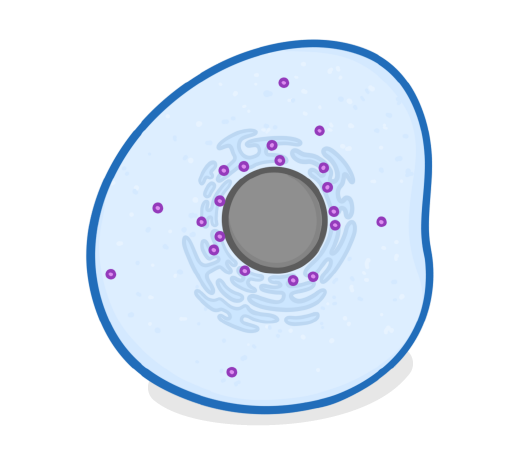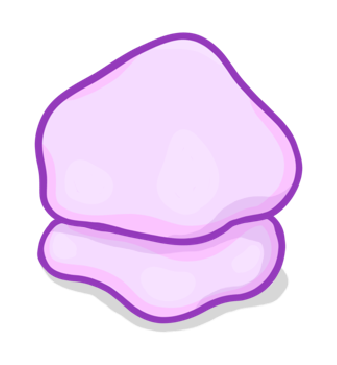Protein Synthesis
This lesson covers:
- How proteins are made (a process we call 'protein synthesis')
- For AQA you do not need to know the details of the subtopic. We have included it here so that you can understand the process if you want to, but you only need to understand the rough idea of the process.
- Do not worry about remembering terms like transcription, translation, mRNA, tRNA, and template strand.
A section of DNA that codes for a protein is called a .
|
Which of the following describes transcription?
The movement of DNA from the nucleus to the cytoplasm
The copying of a single gene of DNA, to mRNA
The combination of amino acids to form a polypeptide
|

Where does transcription take place?
Nucleus
Ribosome
Mitochondria
Chloroplast
|
Why does a gene of DNA have to be copied to mRNA (transcription)?
DNA has the wrong code
DNA is too large to leave the nucleus
DNA doesn't carry genetic information
|
How is mRNA different to DNA?
(Select all that apply)
mRNA is shorter than DNA
mRNA is single stranded, but DNA is double stranded
mRNA is double stranded, but DNA is single stranded
mRNA is longer than DNA
|
Once the mRNA leaves the nucleus and enters the cytoplasm, which sub-cellular structure (organelle) does it go to?
Chloroplast
Mitochondria
Ribosome
Cell membrane
|
Which of the following describes translation?
The copying of a single gene of DNA to mRNA
The combination of amino acids to form a polypeptide
The movement of DNA from the nucleus to the cytoplasm
|
How many bases are needed to code for one amino acid?
1
2
3
4
|

What is the function of a ribosome?
To assemble proteins from amino acids
To build sugars from water and carbon dioxide
To release energy from glucose
|
A chain of amino acids is called a ____________.
Nucleic acid
Polypeptide
Carbohydrate
|
Different sequences of amino acids within a polypeptide will fold up into different shapes, and so form different .
|